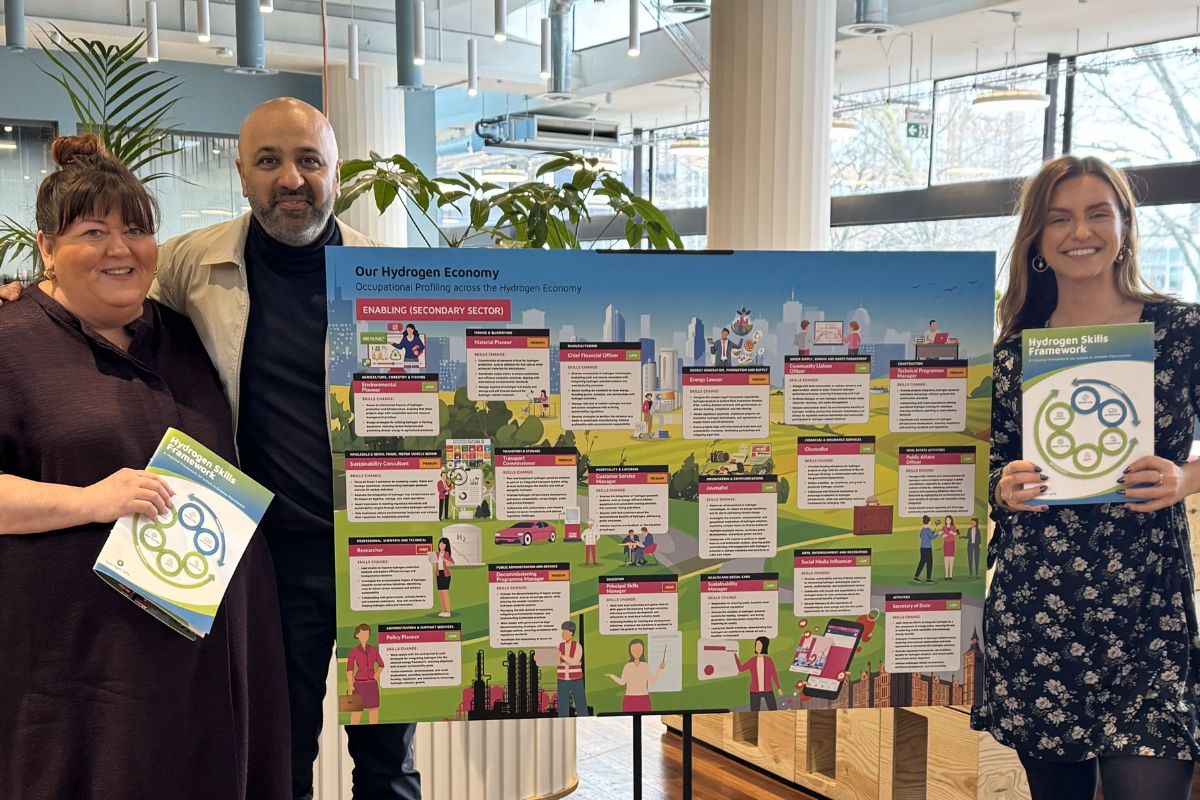The Ada Lovelace effect and why women still need powerful STEM role models

Ada Lovelace (1815-1852) was the first ever computer programmer – a woman ahead of her time. But in 2018 we are still urging women into careers that are dominated by men.
It is a long-standing problem that women are under-represented at the highest levels in scientific fields.
The disparity between genders studying STEM (science, technology, engineering and maths) subjects could partly explain the digital skills shortage in the UK and The Guardian rightly questions, why do so few girls study STEM subjects?
Closing the skills gap
Jisc is helping to tackle the skills shortage by encouraging members to embed digital skills into the curriculum and give educators the support they need to teach them.
The government’s industrial strategy states: “Within two decades, 90% of jobs will require some digital proficiency, yet 23% of adults lack basic digital skills.”
Jisc’s digital experience insights survey shows that half of college learners and almost 70% of university students think digital skills will be imperative for their careers. Yet only 41% believe their courses prepare them for a digital workplace.
The UK is currently facing a huge STEM skills shortage. New findings from STEM Learning show that 73% of businesses have found it more difficult to hire staff in the last 12 months.
To help counter this problem and inspire the next generations of scientists, Jisc has recently formed a partnership with STEM Learning, whereby some of our employees have become STEM Ambassadors. The ambassadors are volunteers from a wide range of STEM-related jobs and disciplines across the UK, who offer their time by visiting schools to share their experience and enthusiasm.
The lack of female representation in science is a long-running issue, dating from before Ada Lovelace’s time. One recent study grimly suggested that gender parity in science is “generations away”, while another showed that men continue to cite other men significantly more often than women in their article bibliographies.
We hope that our STEM Ambassadors play a small but significant part in redressing the balance.
Why become a STEM Ambassador?
One of our STEM Ambassadors, sector analyst Caitlin Bloom, said:
“I enjoy working for Jisc because I like solving puzzles, I like to find out how things work and fit together and why.”
As a child she was fascinated by space and the physical and chemical world in which we exist. But in later life she was told she couldn’t do the A-level combination she wanted to, so her dream of studying chemistry was pushed aside. Caitlin added:
“Why was it wrong of me to want to do a subject I love just because it didn’t ‘fit’ and no additional support was available to make it happen?”
After university, she worked at De Montfort University (DMU) and University of Leicester, where she was on the IT/TEL committees. At DMU she was also involved in the digital transformation project, working on minimum standards for virtual learning environments (VLE) and on installing Jisc’s wireless network, eduroam.
“As a STEM Ambassador I want to encourage students (and especially girls) to study the subjects they want to and to keep STEM options open to them in the future. My inspirational role models are Isaac Newton, Alan Turing and Brian Cox. It is a shame I can’t add a woman here, but I guess that illustrates the issue!” she said.
Inspired by Ada Lovelace
Although men typically dominate STEM fields, many women, including Lovelace, have shown that these industries aren’t exclusively for men. Lovelace’s ingenuity makes her a significant role model for young women wanting to pursue science and technology careers.
The Ada National College for Digital Skills (named after Ada Lovelace) is a specialist further education college, tailored to help fill the country’s digital skills gap.
The college’s head of external relations, Amy Fowler, mentioned in a blog about Ada Lovelace last year, that:
“Only 17% of UK digital jobs are filled by women. That’s got to change and at Ada we are actively changing it by striving to recruit 50% of our students as women and 50% from low-income backgrounds. The more diversity we see in this space the more our students will internalise that background has no bearing on talent, drive and the ability to be great.”
Could you be the next Ada Lovelace?
If you’ve considered pursuing a job in STEM areas, you may be interested in joining Jisc as a way of inspiring, encouraging and supporting the next generation into occupations involving digital technology.











Responses